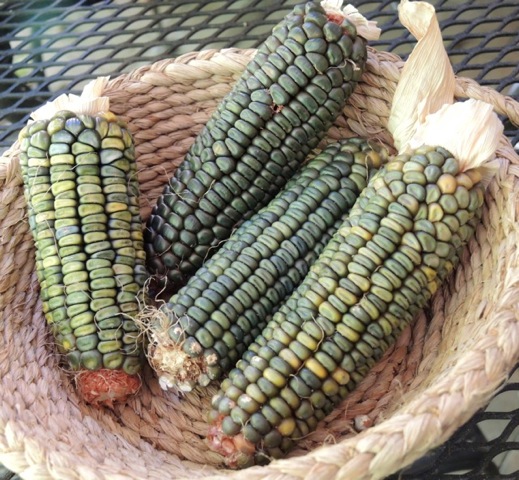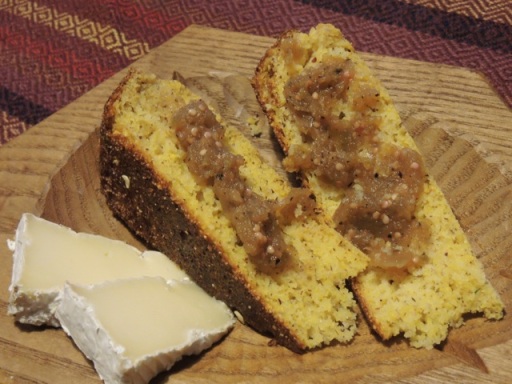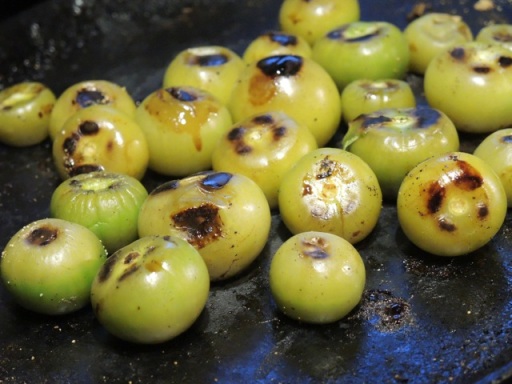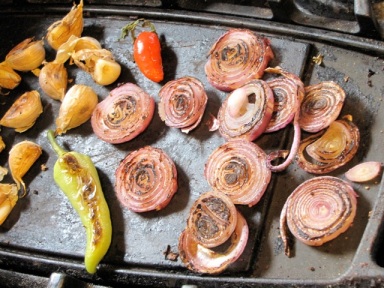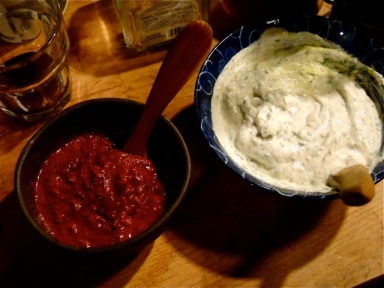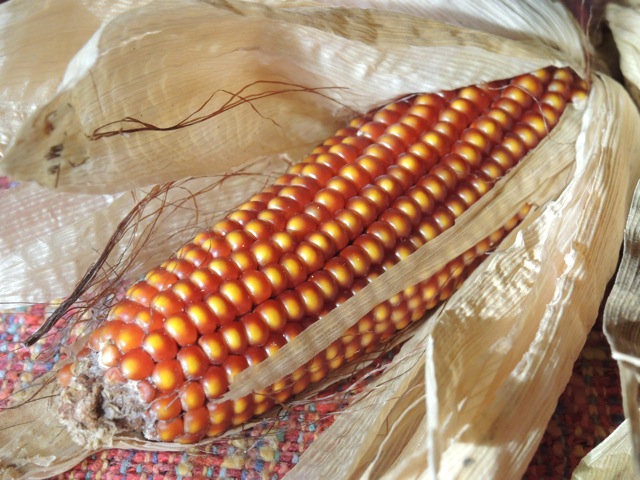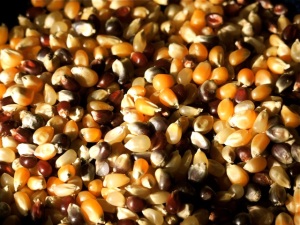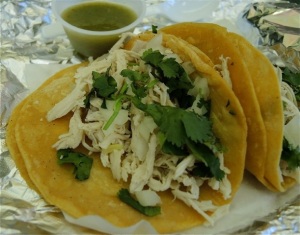I have been reading Michael Pollan’s book, Cooked. It begins with lofty questions like….”what is the most important thing an ordinary person can do to help reform the American food system to make it healthier and more sustainable?” And, “…how can we acquire a deeper understanding of the natural world and our species’ peculiar role in it?” Rather than going to the woods to confront these questions, Pollan decided he could find more interesting answers by exploring the “previously uncharted territory of his own kitchen.” His exploration took him to the barbeque pits of North Carolina, the braise pots of a self-described obsessive-compulsive chef, the cellar of a microbiologist-cheesemaker, the sauerkraut crocks of Sandor Katz, the wood-fired oven of “the bread monk”, and a “mad scientist” brewer…all his mentors are people who seek “the deepest, farthest, richest flavors in everything…” I love this book as a cookbook, even though–or maybe because– there are only four recipes. Who needs more than four recipes, anyway? I love it because it makes you want to cook. Anything.
Where to start? “When you find something that is easy to make, healthful, and tastes great, go with it,” say Chris Schlesinger and John Willoughby, authors of Salsas, Sambals, Chutneys, and Chowchow. Cornbread falls in that category…and salsa to go with it. Two of the most humble, beloved, and inseparable staples of my kitchen are cornbread and the cast-iron skillet I cook it in. Cornbread is easy, healthful, and great tasting…and it’s always better homemade and straight out of the oven. Mix it up, pour the batter in a hot pan, and pop it in the oven. The keys to great cornbread are good tasting cornmeal and a hot cast-iron skillet.
How do you get good-tasting cornmeal? Look for organically grown, stone-ground cornmeal–freshly milled, if possible. My cornbread really took a flavor leap when I started grinding my own cornmeal from homegrown corn. This year I have had Hopi Blue, Oaxaca Green, and Floriani (a red Italian flint corn) to play with. I grind the corn with a hand-cranked mill, or electric spice grinder if I just want a cup or so. The resulting meal is somewhat gritty, so I sift it through a sieve and set the larger chunks aside for polenta. Freshly ground cornmeal is wonderfully fragrant and full of corn flavor. Plus, it comes in different colors!
There are two basic approaches to making cornbread. The more common way is to use half unbleached all-purpose wheat flour and half cornmeal in the recipe to get lighter and firmer bread. The second way is to go with 100% corn, which is more crumbly (possibly gritty, depending on the milling) but very flavorful. Each has their fans.
Cornmeal itself comes in different textures, depending on the type of corn and how it was ground. Dent corn has a floury interior and softer hull than flint corn, which has a very hard outer layer that breaks into chunks (grits). I like to combine different textures, especially when using 100% cornmeal. Flour-like cornmeal helps hold the bread together, and grittier meal contributes interesting texture.
Basic Cornbread
Ingredients: 1 cup unbleached all-purpose wheat flour, 1 cup cornmeal (or use 2 cups cornmeal and omit the wheat flour), 1/2 tsp salt, 1/2 tsp baking soda, 2 1/2 tsp baking powder, 1 large egg, 1/4 cup vegetable oil, 1 1/2 cups buttermilk or kefir (or 1 cup yogurt thinned with 1/2 milk), 2 tsp butter plus 1 tsp oil
Heat the oven to 400 degrees F. Heat a 9 to 10-inch iron skillet over a medium flame on the stovetop while you mix the batter. In a large bowl, mix together the flour (if using), cornmeal, salt, soda, and baking powder. In another bowl, lightly beat the egg and whisk in the oil and buttermilk. Pour the liquid into the dry ingredients and stir as briefly as possible to combine.
When the pan is hot and the batter is ready, add the butter and oil and swirl to coat the pan. Pour the batter into the skillet (it should sizzle) and transfer to the oven. Bake 25 to 30 minutes, until golden brown and delicious smelling.
What to eat on your cornbread: Some folks like to slather cornbread with honey, sorghum molasses, or apple butter. We like to top our cornbread with something spicy–any salsa or chile sauce will do, but cooked salsas are particularly good. Salsa with a smear of soft cheese is even better.
Roasted Tomatillo-Chipotle Salsa
Tomatillos and corn are a good example of “what grows together goes together.” The citrus-sharp flavor of tomatillos makes this salsa a perfect topping for earthy-sweet cornbread. Roasting mellows the tartness of tomatillos, and blended with dry-roasted garlic and smoky chipotle chiles, these are flavors made in heaven.
Ingredients: 10 to12 medium tomatillos (husked and rinsed), 4 unpeeled garlic cloves, 3 to 6 canned chipotles en adobo, 2 to 4 Tbs finely chopped white onion, 2 Tbs roughly chopped cilantro, salt to taste
Heat a heavy griddle or skillet over medium heat. Roast the garlic and tomatillos directly on the hot pan, turning occasionally, until blackened in spots and soft. Tomatillos will take about 10 minutes, garlic about 15. Alternatively, place the tomatillos on a baking sheet under a hot broiler for about 5 minutes per side.
For a smooth sauce, use a blender to puree the tomatillos, peeled garlic, and chipotle chiles. For a chunky, rustic sauce that surprises your taste buds with chipotle explosions, use a mortar and pestle. Crush the garlic and chipotles together before working in the tomatillos. Season with salt, and stir in the onion and cilantro.
Roasted Tomato-Serrano Salsa
Grilled vine-ripe tomatoes are great, but pan-roasted still gives a toasted flavor to this salsa. Don’t worry if there are specks of charred skin–they are part of the deliciousness factor.
Ingredients: 8 ripe plum tomatoes (or 1 14-oz can fire-roasted diced tomatoes), 1 small white onion, 2 to 4 serrano chiles, 2 or 3 unpeeled garlic cloves, a handful chopped cilantro, fresh lime juice, salt
Heat a heavy skillet over medium heat. Roast the tomatoes directly on the skillet, turning from time to time, until blistered and charred–about 10 minutes. Set aside to cool. Slice the onion into rings about 1/4-inch thick. Place the onion, chiles, and garlic on the hot skillet and roast, turning occasionally, until blackened in spots and soft–5 to 10 minutes for the chiles and onion, 15 for the garlic.
Peel the tomatoes and coarsely chop, saving the juices. Chop the onion. Use a mortar and pestle to crush and grind the chiles and peeled garlic with 1/2 tsp coarse salt to make a rough paste. Add the chopped tomatoes and onion and crush lightly to combine. Season with lime juice and salt to taste and stir in the cilantro.
Quark
Quark is a fresh, soft cow’s milk cheese that has been described as “mascarpone meets sour cream meets yogurt”–tangy and creamy at the same time. It is light enough to eat like yogurt and thick enough to spread on bread (maybe with a few leaves of arugula and a slice of tomato).
I made quark with a half-gallon of raw milk that my daughter, Naomi, got from a nice cow in Marshall. The milk was already sour, so we just let it sit out overnight to get thick. When the curd began to pull away from the sides of the jar, I ladled it into a cheesecloth-lined colander and stuck it in the refrigerator to drain. It was that easy.
You can make quark with fresh raw milk or any store bought milk (lower fat milk yields a drier cheese) by letting the milk acidify (sour) and thicken with the help of a culture. The culture can come from buttermilk or a commercial culture from a cheese supply company like New England Cheesemaking Supply (who also supply detailed instructions). Heat milk slowly to 86 degrees F. Stir in 1 cup cultured buttermilk for every 4 cups milk, or follow directions on the culture pack. Allow the milk to cool to about 70 degrees F and hold at that temperature 12 to 24 hours while the curd coagulates. When a thin layer of whey forms on the surface and the curd pulls away from the sides, it is ready to drain. Transfer the curd to a colander lined with clean muslin or cheesecloth and allow to drain 4 to 12 hours. Refrigeration during this time produces a milder flavored cheese. Scrape the cheese from the sides of the cloth occasionally for better draining. Taste the cheese along the way and stop the process when the texture suits your taste. You can add sour cream to the finished quark for a richer tasting cheese.
Blending plain yogurt, cream cheese or Neufchatel, and sour cream or buttermilk can make an approximation of quark. In a bowl, mash together 4 oz cream cheese (made without guar gum) and 2 to 4 Tbs sour cream with a fork. Gently stir in 1 cup thick yogurt and 1 tsp fresh lemon juice.
You can make sweet quark by stirring in a little honey or maple syrup. Or, try it with chopped fresh fruit or preserves. I like to mix a little salt, lemon zest, minced garlic, and chopped fresh herbs. Sweet or savory, it’s a great topping for cornbread.
